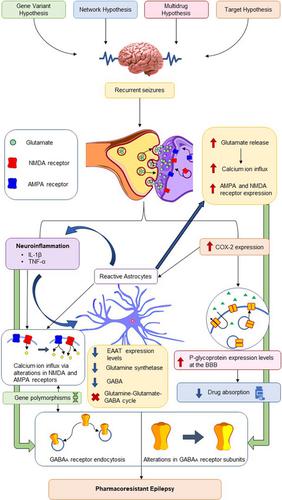当前位置:
X-MOL 学术
›
Eur. J. Neurosci.
›
论文详情
Our official English website, www.x-mol.net, welcomes your feedback! (Note: you will need to create a separate account there.)
Possible interplay between the theories of pharmacoresistant epilepsy
European Journal of Neuroscience ( IF 3.698 ) Pub Date : 2020-12-11 , DOI: 10.1111/ejn.15079 Iman Imtiyaz Ahmed Juvale 1 , Ahmad Tarmizi Che Has 1
European Journal of Neuroscience ( IF 3.698 ) Pub Date : 2020-12-11 , DOI: 10.1111/ejn.15079 Iman Imtiyaz Ahmed Juvale 1 , Ahmad Tarmizi Che Has 1
Affiliation

|
Epilepsy is one of the oldest known neurological disorders and is characterized by recurrent seizure activity. It has a high incidence rate, affecting a broad demographic in both developed and developing countries. Comorbid conditions are frequent in patients with epilepsy and have detrimental effects on their quality of life. Current management options for epilepsy include the use of anti‐epileptic drugs, surgery, or a ketogenic diet. However, more than 30% of patients diagnosed with epilepsy exhibit drug resistance to anti‐epileptic drugs. Further, surgery and ketogenic diets do little to alleviate the symptoms of patients with pharmacoresistant epilepsy. Thus, there is an urgent need to understand the underlying mechanisms of pharmacoresistant epilepsy to design newer and more effective anti‐epileptic drugs. Several theories of pharmacoresistant epilepsy have been suggested over the years, the most common being the gene variant hypothesis, network hypothesis, multidrug transporter hypothesis, and target hypothesis. In our review, we discuss the main theories of pharmacoresistant epilepsy and highlight a possible interconnection between their mechanisms that could lead to the development of novel therapies for pharmacoresistant epilepsy.
更新日期:2020-12-11



























 京公网安备 11010802027423号
京公网安备 11010802027423号